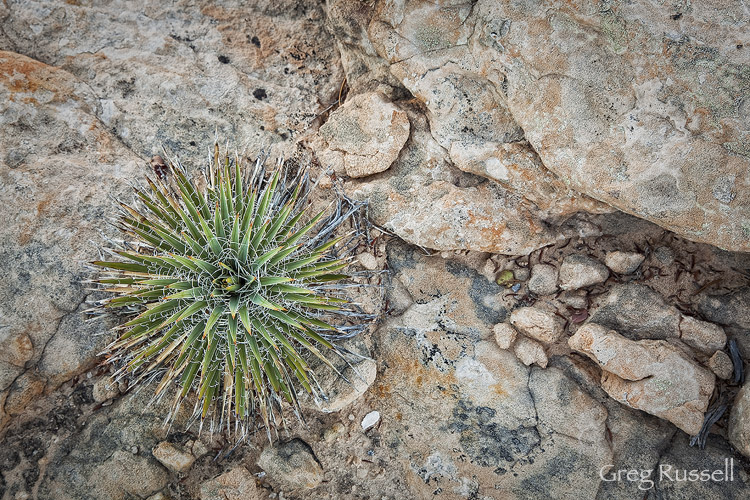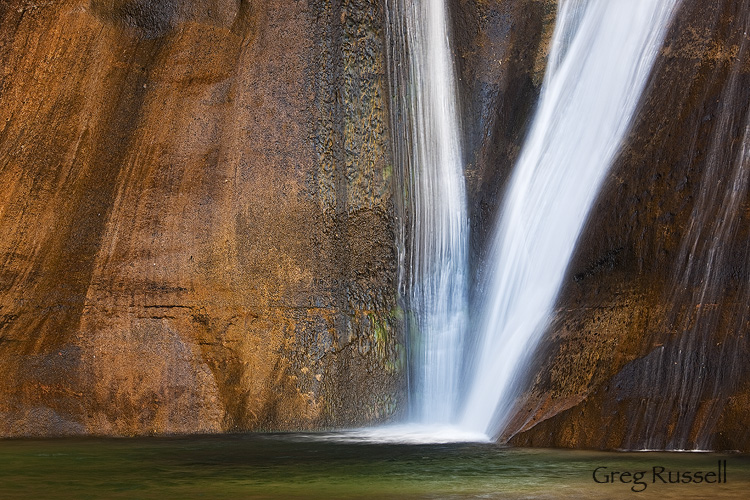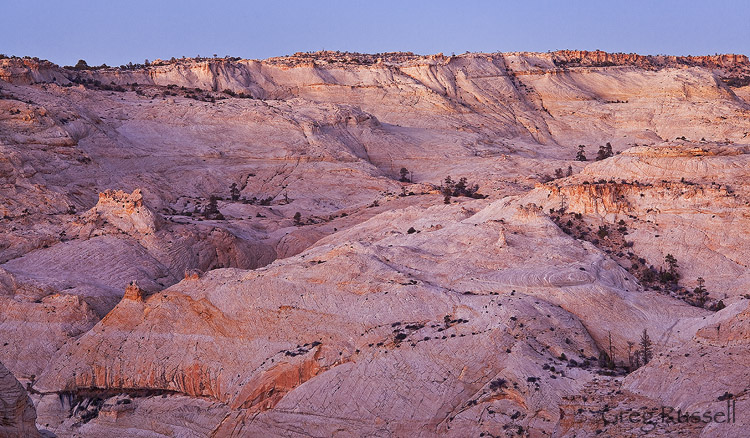It’s chilly, gloomy, and rainy outside today; winter, it seems, has arrived in southern California. Sitting here in my office, the heater is warming me up, and I am listening to Mozart’s Piano Concerto No. 20 in D minor. The third and final movement ends on a happy and light note, but unlike some of Mozart’s other work, Concerto No. 20 is aggressive, in places even agitated and ominous; well-suited for the weather today. As I listen, I think of our recent trip to the Escalante area of southern Utah. How fitting I would be drawn to this particular piece today, as my imagination wanders back to the sandstone I love so much.
Just like a good friend, the redrock wilderness always welcomes me; my feet find purchase immediately, and it is as if we haven’t skipped a beat since being apart. I am constantly amazed at the plant life that–like my feet–finds refuge in this habitat of stone. These organisms eek out a living, nurtured by the harsh landscape, growing slowly but surely through the years.
Hiking up the Calf Creek drainage with my family, I think of a word that’s not often used in the desert: “lush.” Harbored between the gaunt canyon walls is an ecosystem that supports thriving plant and animal life. It is easy to see why you can look high up on the rock walls and see ancient Native American granaries, dwellings and rock art–they were drawn here for the same reasons as we are. Sustenance. Life. Safety. While I am not growing food or defending myself from marauders, all of these qualities are here for me. They are undeniable. As the morning progresses, cold night air moves out of the canyon, meeting the warm air that is radiating off of the sun-warmed rocks; the lingering scent of autumn hangs in the air, and it is difficult to imagine a place on earth where I would rather be. Just like Mozart’s welcoming melodies, it is easy to feel that way here: embraced, peaceful, calm.
In the same way that Concerto No. 20 turns turbulent, so can the desert. Here in the Escalante, temperatures can drop below zero in the winter and can soar to well over 100 degrees in the summer. While plants and animals find a way to survive, it is not without compromise; life here is harsh. A summer’s worth of water can arrive in one storm, destroying everything in its path as it crashes through the tight corridors of a slot canyon. I have never seen the desert her in all of her fury, and am not sure I would want to. However, it is just that fury that has helped shape this landscape into what it is.
Under a wine-dark sky I walk through the light reflected and re-reflected from the walls and floor of the canyon, a radiant golden light that glows on rock and stream, sand and leaf in varied hues of amber, honey, whisky — the light that never was is here, now, in the storm-sculptured gorge of the Escalante.
–Edward Abbey, Desert Solitaire
I am now sitting here listening to the rain hit the window of my office; Mozart’s Concerto is over. After 227 years his music lives on, and is still evocative; it will be until we as a species cannot hear–or feel–any longer. So will the Escalante, which is not exactly a piano concerto, but is–without question–a work of art.





Evocative writing, Greg with photos to match. Desert Utopia is especially fine. My father used to play Mozart on his baby grand and gave me an early insight into his work. It’s always a great refuge for me. I also grew up in a county of Devonian Old Red sandstone. Happy days. Thanks for bringing back the memories.
What a wonderful post – the words, the mood it sets, and then the exquisite photos of the wild desert. Inspiring! (And I think I’ve also been inspired to listen to some Mozart this morning, even if I am under the sunny skies of Arizona.)
Another well written post along with images. I have to smile when I read something like this after such a trip into nature. It is another example of nature nurturing us.
A few years ago I visited my parents who live in Gold Canyon which is east of Phoenix. Nearby is Silly Mountain which was a solid yellow from all the blooms after a nice rain. I spent several early morning hours wandering along the trails and taking photos. Love that third image!
Beautiful, Greg. This post touches on deeper connections more than anything I’ve read in a long time…
Great stuff Greg! That’s a really distinctive and excellent take on the falls, and that glowing sandstone in Gloaming is amazing.
Agree the writing is very evocative – Mozart has inspired you, as he should – probably my favorite composer with the ability to be frivolous, energetic and somber in the same bar.
Our images are indeed little symphonies. room for various moods and tempos within the confines of our nemesis – the frame.
Greg, wonderful post, wonderful images. Thanks for both. The Escalante — the desert — is indeed a work of art, especially when we simply “let it happen” before our eyes.
Very thoughtful post Greg and wonderful images to illustrate. Let us hope that the beauty of the Escalante will endure through the ages as has Mozart’s.
Present and zen like writing Greg. You are writing down the bones, the grist, the cornmeal, the sage of your mind. Great work. The images have many of the same quiet qualities and beauty as your writing. I like the different take on how to photograph a waterfall, just showing the base and two columns of water. Very nice composition.
Thanks, everyone, for the comments. I’ve been thinking a little bit more about this post over the last week, and after an enlightening conversation with G Dan Mitchell, I have a little bit more to add.
I picked Mozart’s piece for the piece itself, but Dan pointed out to me that composers often choose D Minor as the key for more ominous pieces; to quote the immortal Nigel Tufnel (of Spinal Tap fame), “a musical trilogy I’m working on in D minor which is the saddest of all keys, I find. People weep instantly when they hear it, and I don’t know why.”
It might be funny, then to describe a place I love so dearly as something–possibly–with an innate level of…well…sadness. The truth is that there is the high deserts of the Colorado Plateau–while the places I love the most dearly–also have an inherent melancholy that I find difficult to explain. Perhaps, then, D Minor was the right key to use for my blog post (even if I did happen upon that somewhat unintentionally).
I too love Dm and good old Nigel – I am glad to see that your saturation slider doesn’t go to 11 🙂
No man, my saturation slider stops pretty low; I have a governor on it at about 5. 🙂
Whenever I have seen images from the Southwest, the canyons, the desert and the dry lands I have always marveled at the beauty in the different landscapes and the hard life they portend. I find your words to be as expressive as any that have accompanied the books and articles I have read and your images speak volumes along with the words.
Thanks, Steve! I appreciate knowing that. Thanks for always taking the time to read!
Greg – You’ve hit on just what it is about the desert that I so love. It is a place of contradictions and it makes finding things we take for granted in the mountains – lush vegetation and water – a nice surprise. “Autumn in the Desert” is simply exquisite. Wonderful post and images!
I completely agree, Bret; what is commonplace in the mountains is truly a life-giving oasis in the desert. The desert definitely is a place filled with contradictions.
Thanks for the comment on that particular image–I’ve already ordered a print for our house. 🙂